Kenny Slocum is the naturalist and natural resource manager for the Clayton County Conservation Board. This piece was first published on Clayton County Conservation’s website.
RAGBRAI celebrated it’s 50th ride this year, and once more I got to enjoy just a snippet of the mayhem when I shuttled some friends to Iowa’s west coast before returning their vehicle to the finish line.
I must admit I did feel a slight pang of FOMO (fear of missing out) when I watched the massive herd of cyclists depart from Sioux City. I got myself a decent bike this spring but I wasn’t quite up to the task of riding all 500+ miles across the state just yet. Plus, I’d thoroughly enjoyed last year’s KAGPAI and wanted to do it again with a little more time.
Come Sunday morning, all the bikes were on the road and I was ready to start my own adventure. I wanted to get a little mileage under my belt, and give the dew a little time to dissipate, so I made my first stop about an hour down the road at Prescott prairie in Cherokee county. Right away, the prairie magic began.

Prairie blazing star (center) flanked by gray-headed coneflowers
“That’s a lot of bumblebees,” I thought, as just a few steps in the air came alive with the hum of these ungainly little fuzzballs.
“Oh thats…. a *lot* of bumblebees,” I thought as they started to swirl around me. It turns out I’d stepped on a nest, and they were pouring out of the ground like smoke from a campfire. I tried to reason with them, running away and loudly proclaiming that I meant no harm, but they remained unforgiving.
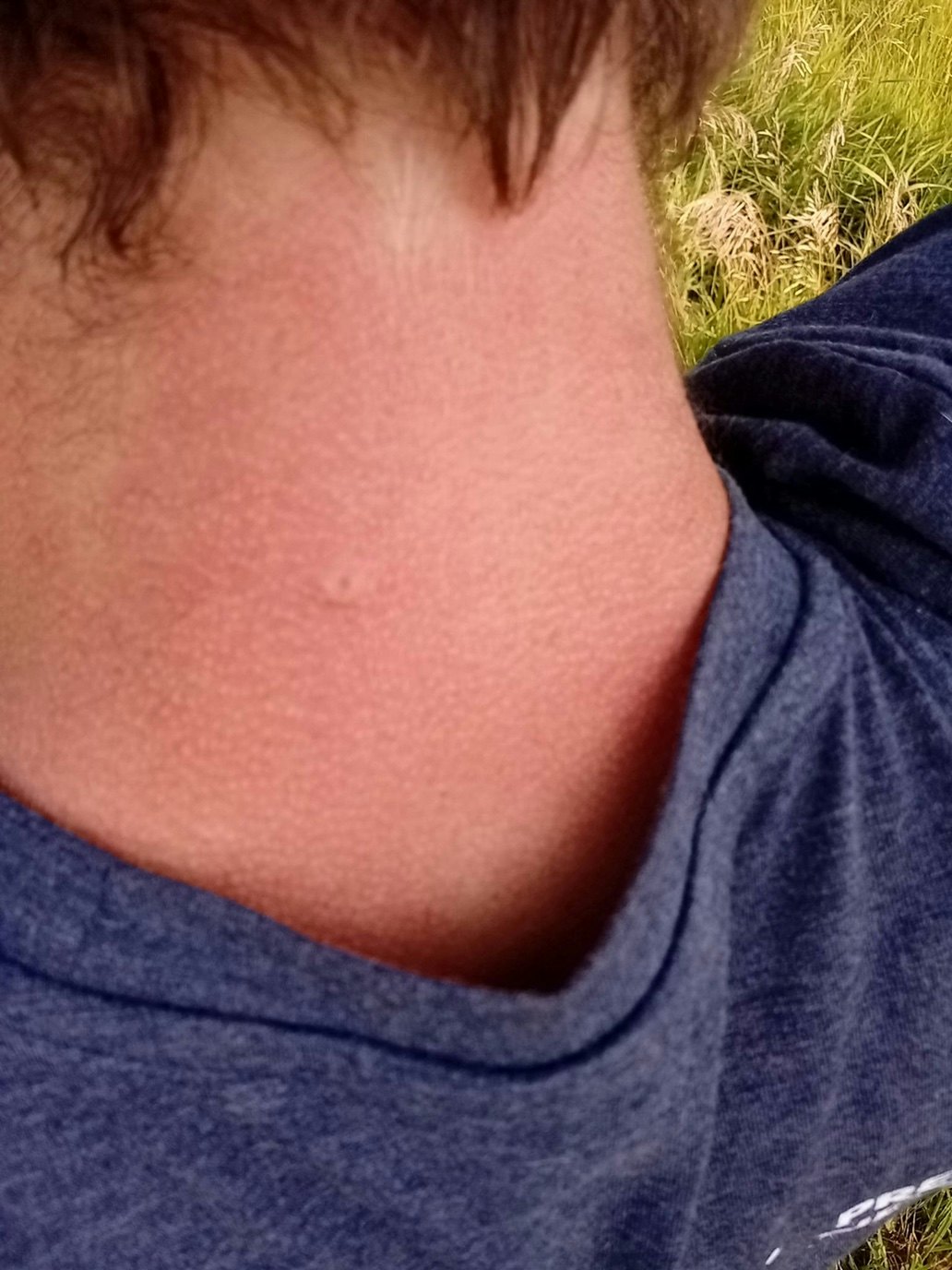
‘Tis but a flesh wound
I’d never been stung by a bumblebee, but once in elementary school a friend told me it’s “1000x worse than regular bee sting.” That friend was a liar. It was actually pretty mild. But the tenacity of the hive was impressive; I tossed my hat on the ground like a lizard dropping it’s tail to distract a predator, and they swirled around it for a good five minutes before going back to their regularly scheduled bee business.
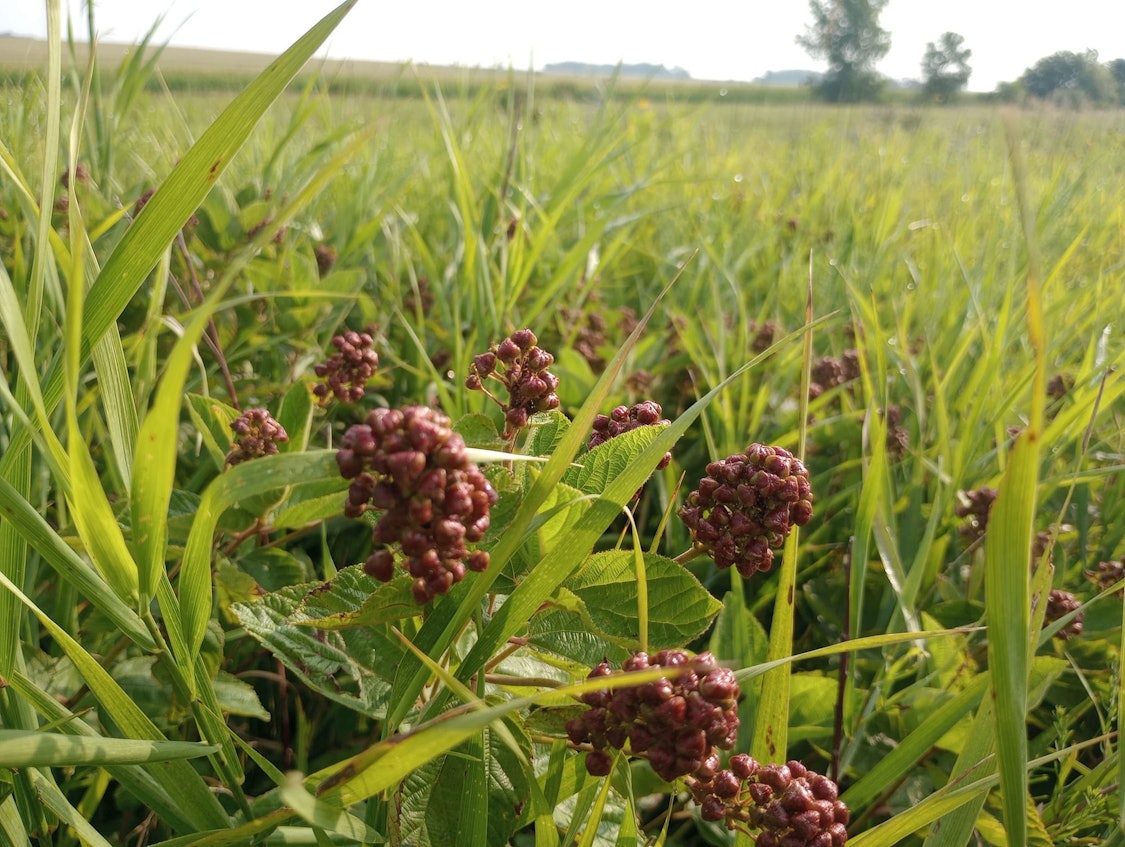
New Jersey Tea hiding the bumblebee nest
While back on the roadside, pondering the greater karmic meaning of this attack, a truck pulled over and asked if I was doing a survey. I explained KAGPAI, and his eyes lit up. It just so happened this passerby had served for years on the Cherokee county conservation board. He told me if I wanted to see some cool prairie I should head to Steele Prairie, about 20 minutes away.
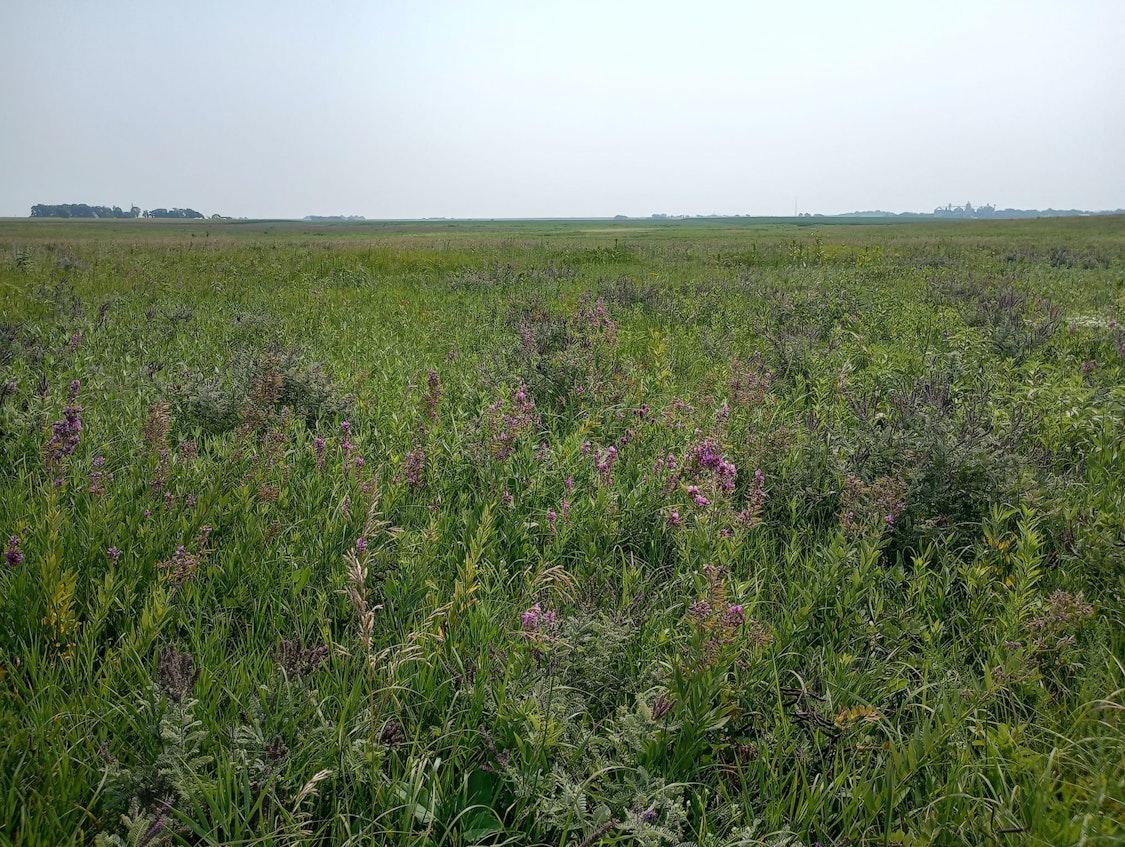
Steele Prairie
True prairie magic. If the bees hadn’t attacked me, I probably wouldn’t have been on the roadside when this gentleman was driving by. If he hadn’t stopped to chat, I probably wouldn’t have seen Steele Prairie, which might be the most impressive prairie I’ve had the pleasure to visit (though many are still on my list).
Steele Prairie, at more than 200 acres, is one of the largest remnants in the state. Prior to its existence as a state preserve, the site’s only exploitation was haying. Never tilled, never seeded, this prairie offers the rare opportunity to gaze upon ancient Iowa, with tallgrass prairie stretching from horizon to horizon.
Tromping from end to end, I marveled at the wildly different vegetation communities borne of subtle differences in topography. In the “uplands,” the droughty year saw scraggly stems of leadplant and prairie coreopsis reaching about shin high.

A wetter swale bisecting the prairie, just a few dozen yards away, hosted a towering jungle of sawtooth sunflower and prairie cordgrass. Even the common milkweed had to reach uncommon heights to compete amongst the tallest of tallgrass prairie.
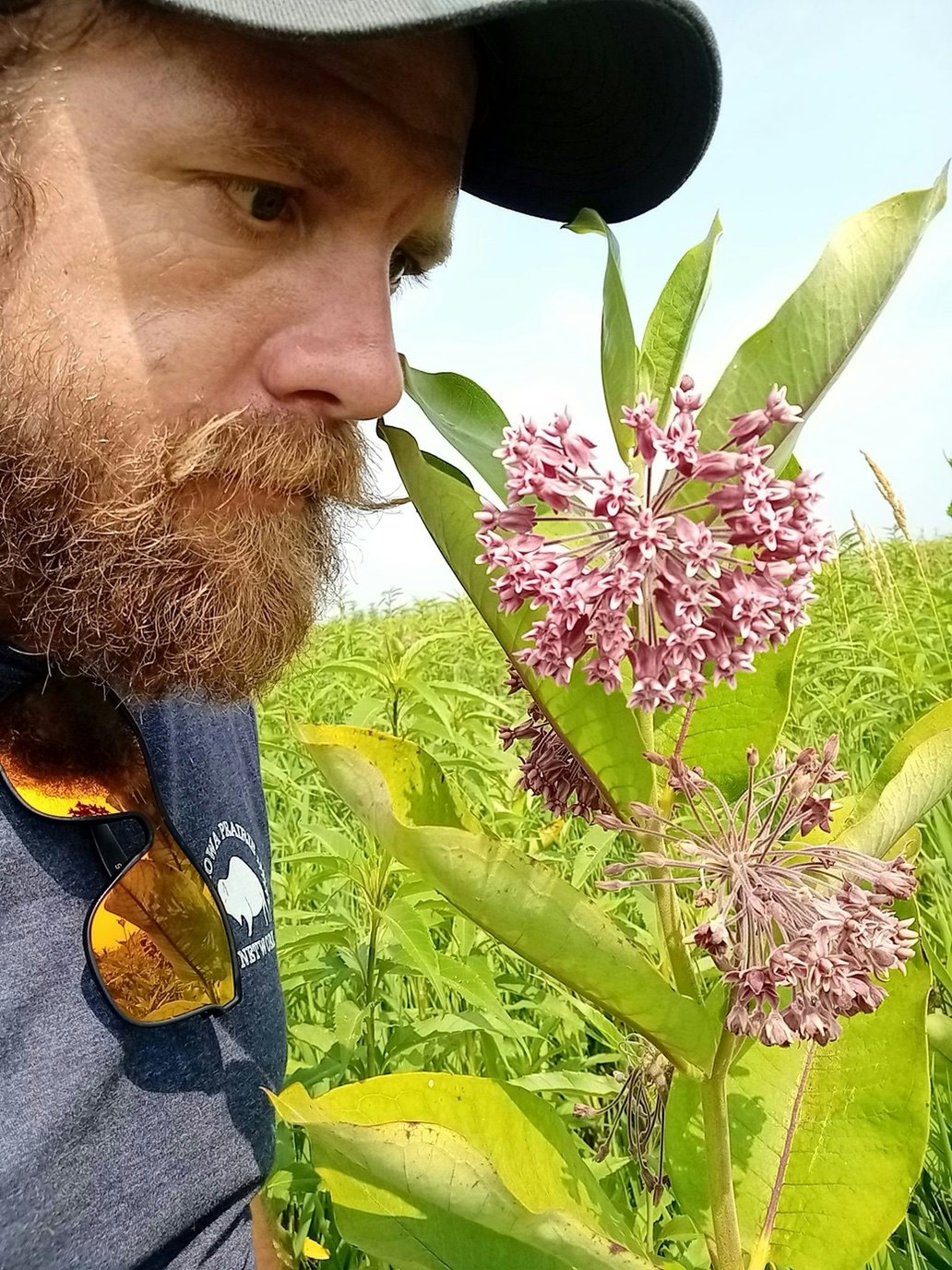
The author next to a common milkweed plant nearly as tall as he is
Little islands of shorter vegetation cued me in on the likely presence of some type of parasitic or allelopathic plant. Sure enough, I spotted some swamp lousewort, potentially a keystone species of wet prairies. This plant parasitizes grasses, not enough to kill them, but enough to stunt their growth.
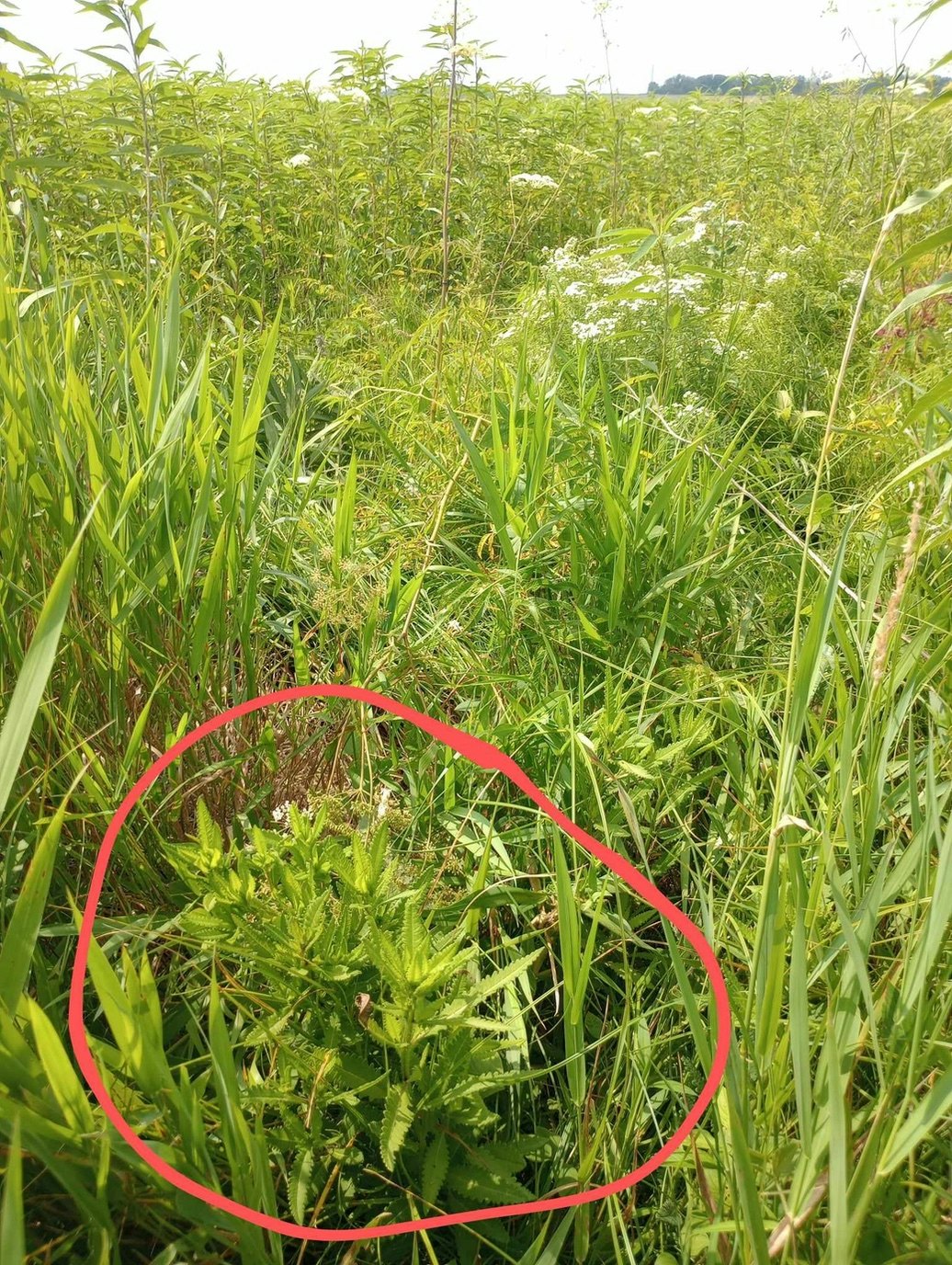
Patch of swamp lousewort circled. Note the suppressed vegetation in the area.
This provides a crucial function in the broader mechanics of a healthy prairie. Short-statured plants find a microhabitat among the stunted vegetation, and foraging birds – especially young birds – have a little easier time wading through the islands created by the lousewort.
Eventually I felt the back of my neck starting to burn in the blazing sun, so it was time to hop back in the car. Further down the road I stumbled upon Banwart prairie in Humboldt County. Not on my list, but the last incidental prairie was pretty cool, so I figured I’d take a quick stop.
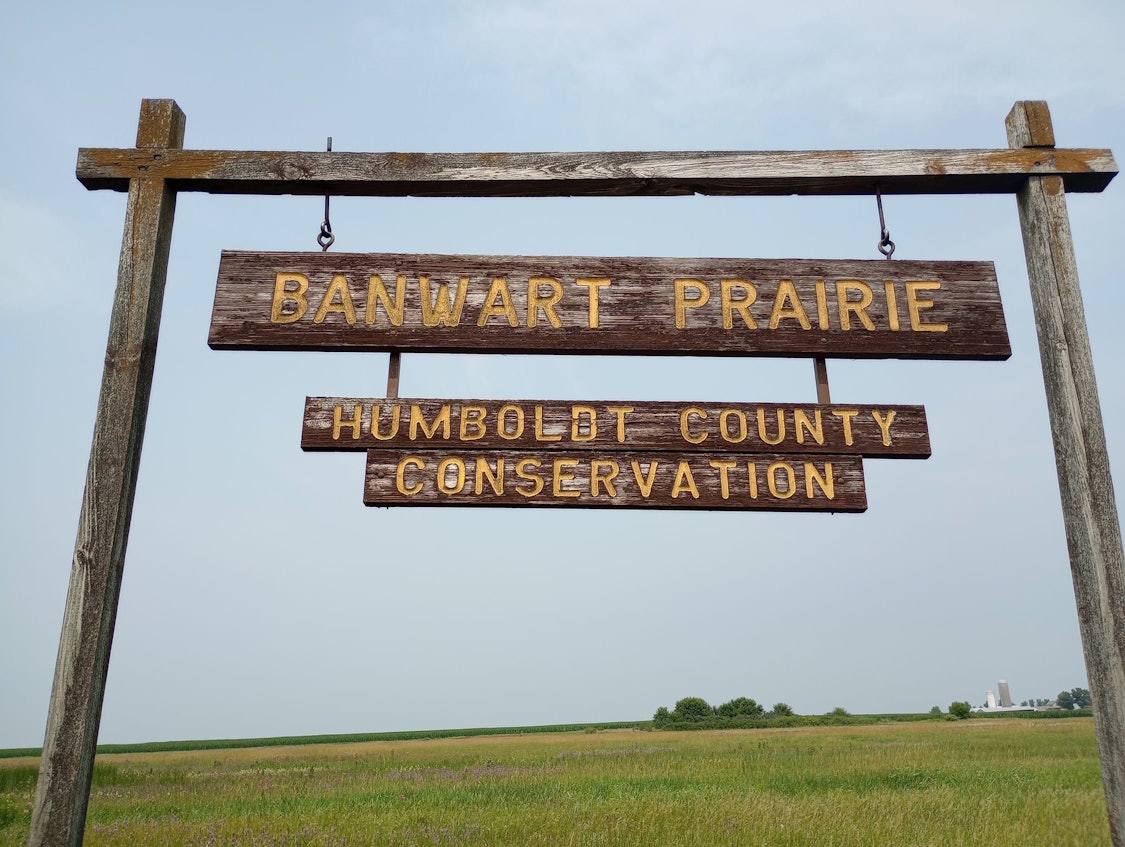
Banwart had me scratching my head. It can prove difficult to ascertain a given prairie’s status re: remnant vs. reconstruction. I’ve learned a lot of these little prairie islands amongst the crop ground often have some quirk that spared them the plow (i.e. remnant), but rarely do county conservation boards or other land management agencies acquire prime crop ground just to plant prairie.
Banwart had all the developmental hallmarks of a remnant. It was surrounded by crops, it had a sign, it had no other amenities like trails or shelters, and the soil had the characteristically dark coloration of an ancient grassland.
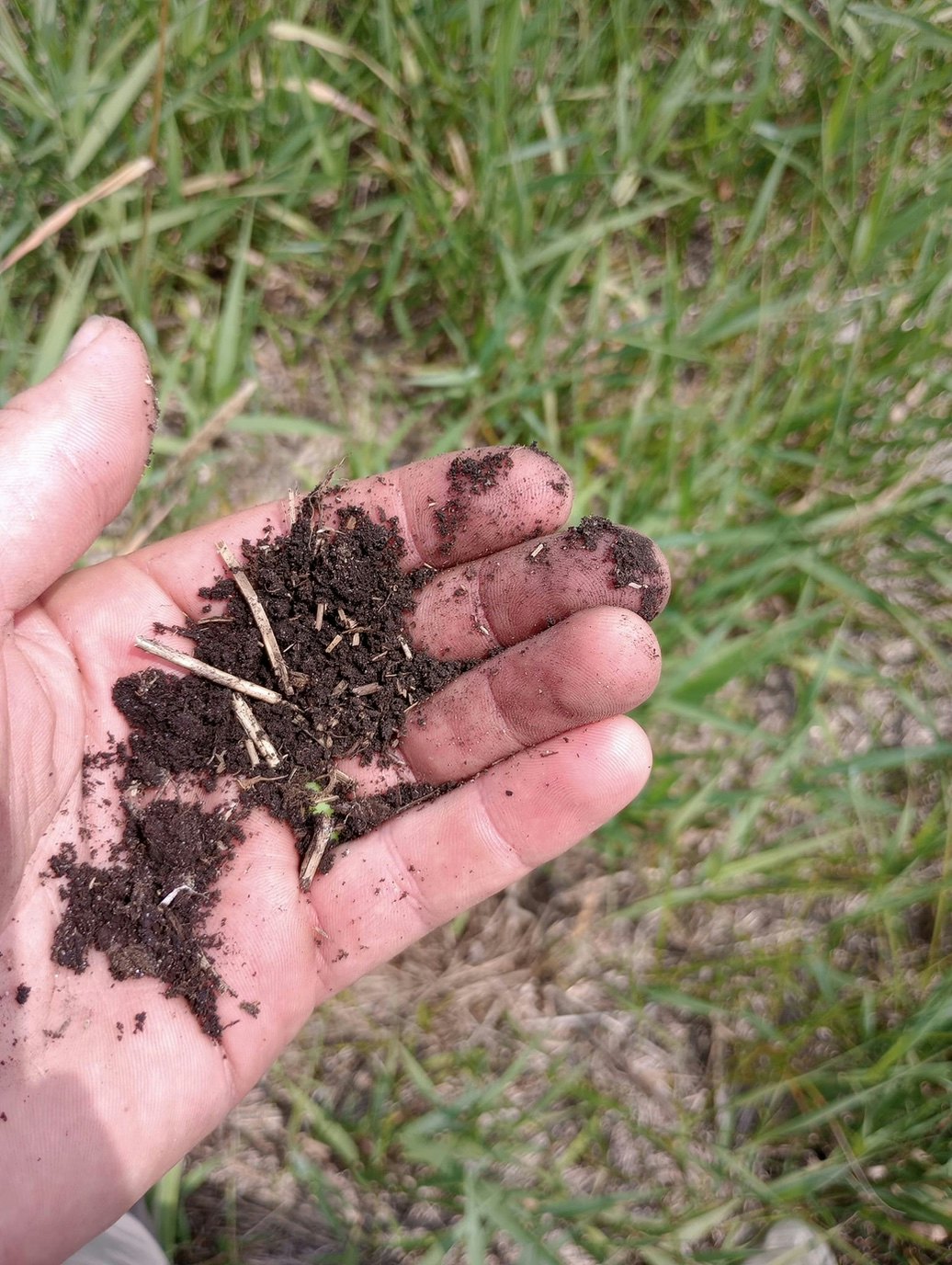
But the plants were all wrong for a remnant. I’d stood in one spot at Steele prairie and counted over 30 native species within roughly a square meter. Banwart, by contrast, had just a few ruderal (weedy) native species and lots of invasives.
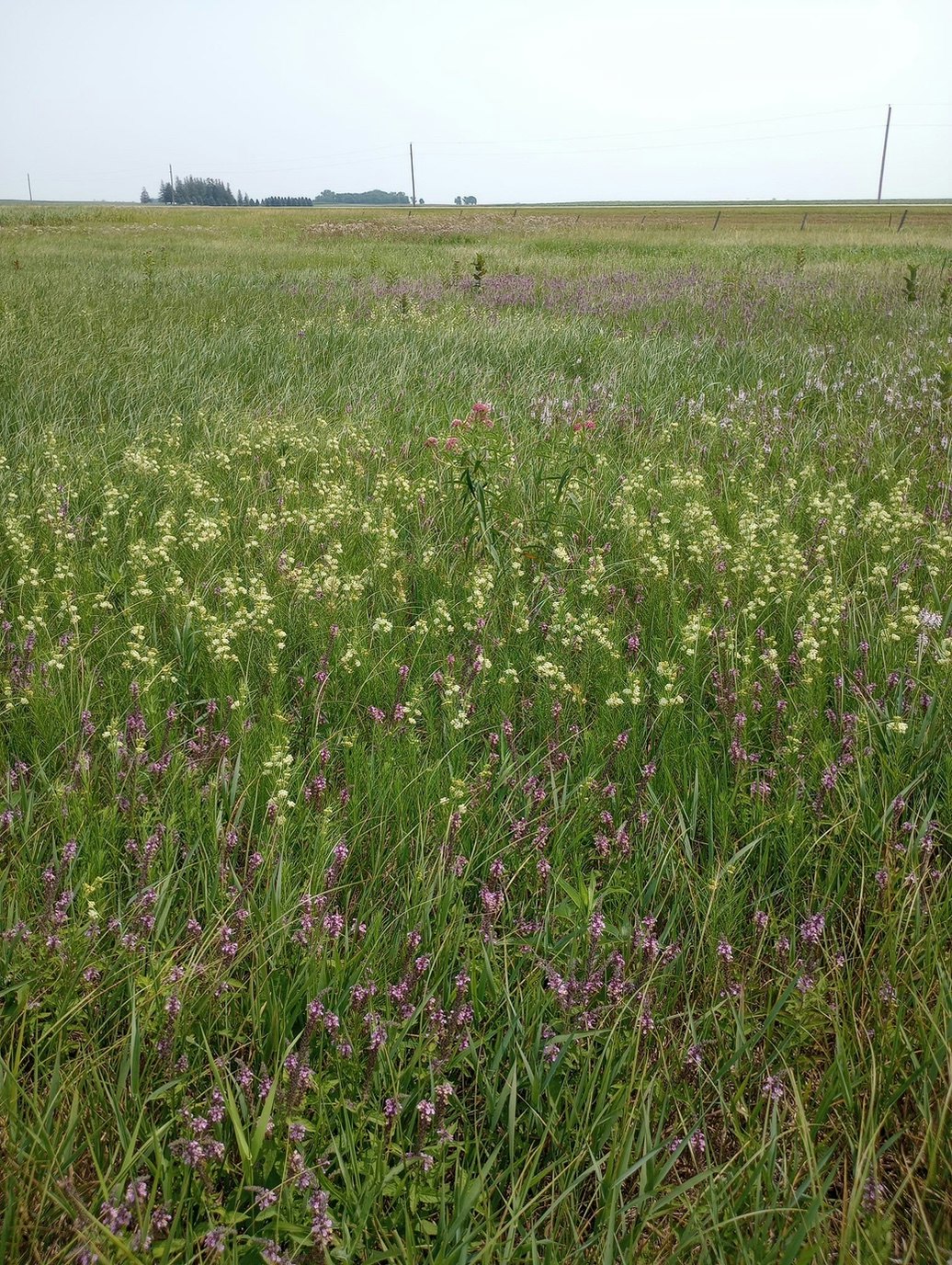
Whorled milkweed (white) and hoary vervain (purple)
I never came to a conclusion, and I didn’t add much to my plant checklist, but I’m still glad I stopped. With each prairie I visit, regardless of the diversity, I understand the next one a little better.
And so it was that I came to the Union Hills Waterfowl Production Area, a fantastically beautiful and expansive site in Cerro Gordo county. This, I could be sure, was a reconstruction, but an incredibly beautiful one nonetheless. First and foremost, I could see the crop history in the dirt.
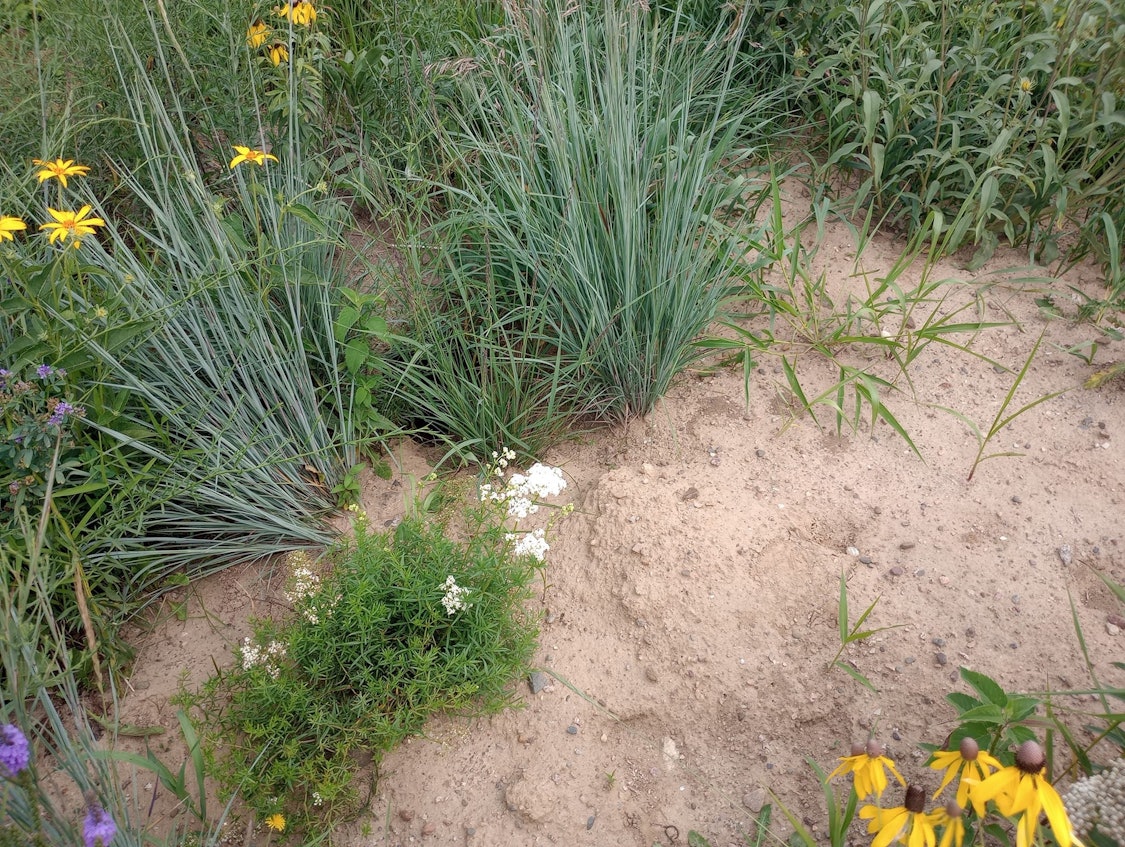
The lighter soil jumped out at me. While the prairie plants are now hard at work rebuilding the soil, I could see a sharp contrast between Steele prairie’s millennia of organic matter and Union Hills’ light and sandy dirt.
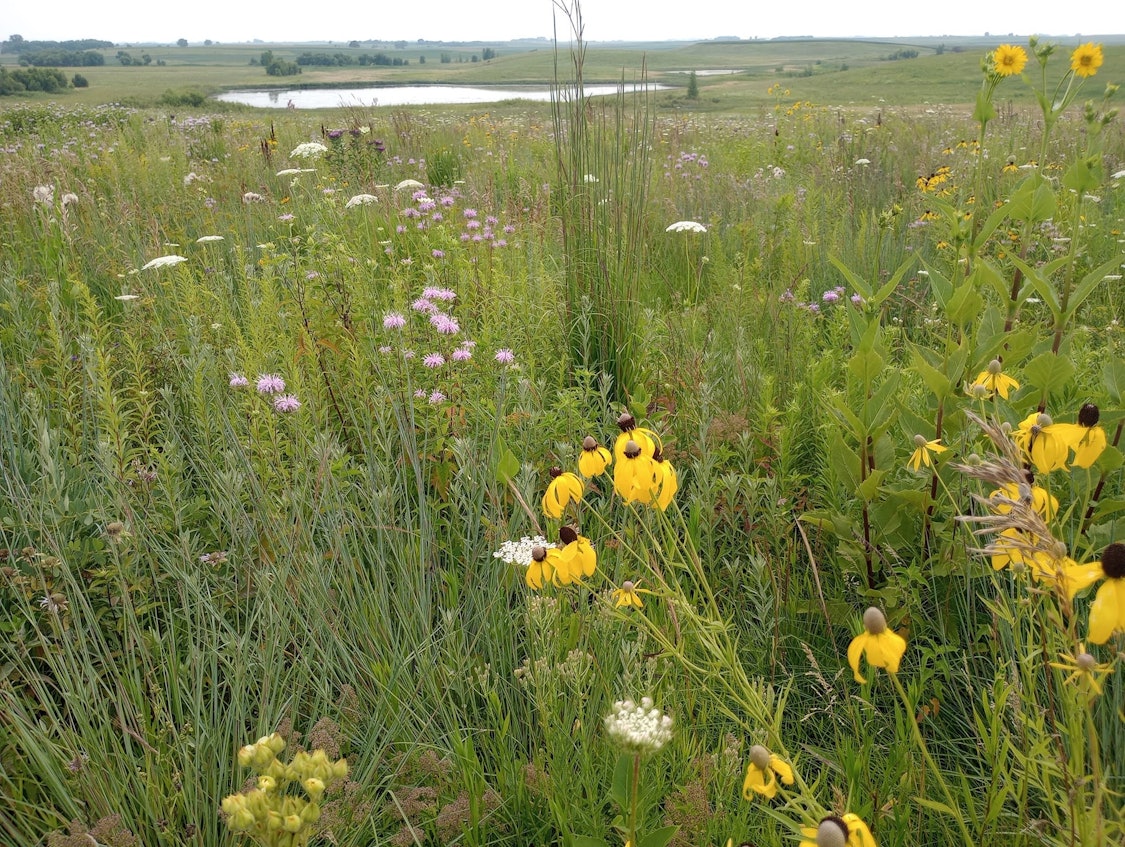
Gray-headed coneflower (yellow), wild bergamot or bee balm (pink), Queen Anne’s lace (white, non-native)
Moreover, the plant composition differed dramatically from the remnants I’ve seen. I thought back to just a few weeks prior when, at the North American Prairie Conference, I attended a talk from Dr. Tom Rosburg where he lamented the lack of geographic specificity in our prairie reconstructions.
“I should be able to get dropped, blindfolded, into an Iowa prairie and be able to tell you which part of the state I’m in based on the vegetation,” Tom said.
It was here in Union Hills that I fully comprehended his statement. Only then did I realize the remnant prairies didn’t speak to me so much by what plants I saw, but more so by what plants I didn’t see.
Wild bergamot, also known as bee balm, also known as monarda provides a wonderful splash of color this time of year, comprising a large portion of the midsummer color in a lot of reconstructions. But I’ll bet I can count on one hand the number of specimens I found in a remnant.
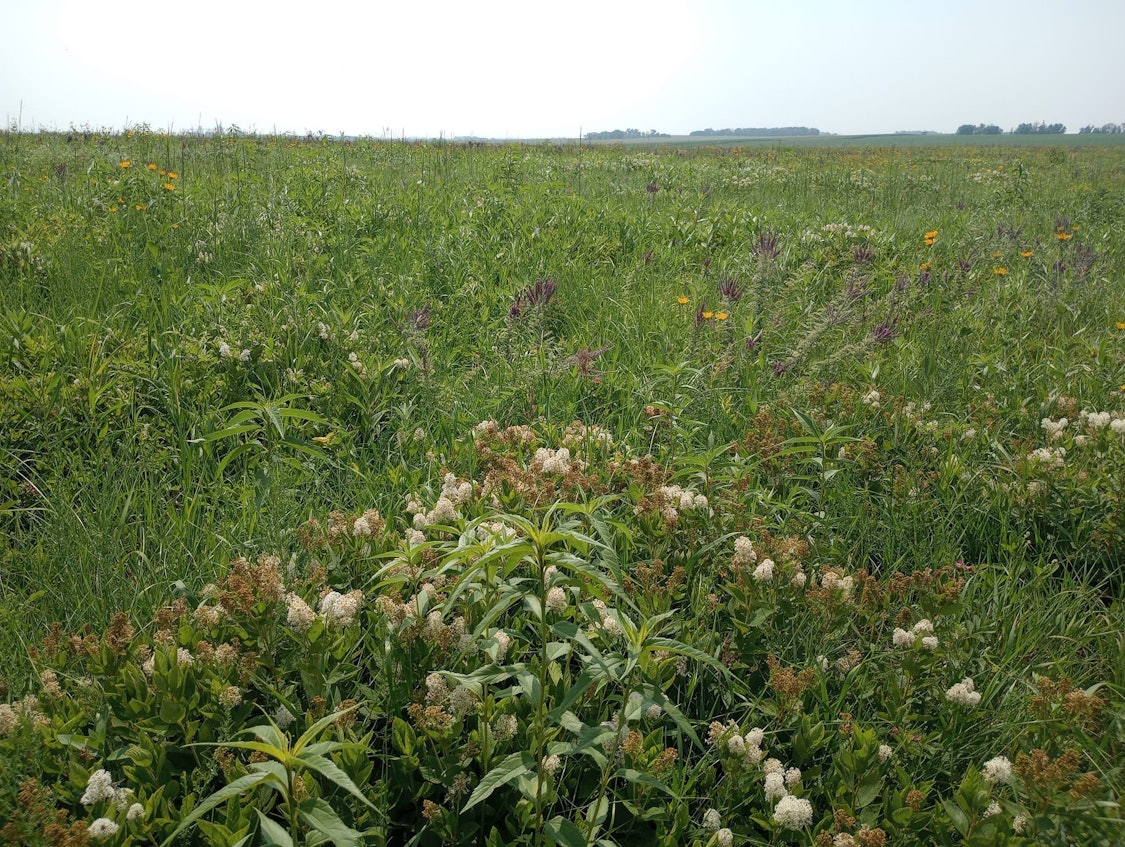
Steele Prairie again. Note the absence of bee balm.
Purple coneflower puts on an equally wonderful show in reconstructions and roadsides throughout the state, but it’s entirely absent from northern Iowa’s prairie remnants. It’s the poster child for Tom’s lamentation.
Our prairie reconstructions, noble though they are, are homogenizing what used to be a fantastically diverse suite of habitats. “Tallgrass prairie” is really an umbrella term, and KAGPAI (Kenny’s Annual Great Prairiestomp Across Iowa) has taught me that no two prairies are the same. But when it comes to a reconstruction, we tend to be a lot less site-specific than mother nature.
Native to Iowa does not mean native to Clayton County. Purple coneflower historically reached the north end of its range in southern Iowa, yet it’s widely planted throughout the state. Certainly, we would all rather see purple coneflower in our plantings than a truly “invasive” species, but it’s hard not to feel like we’ve lost something beautiful when we make all our prairies look the same.
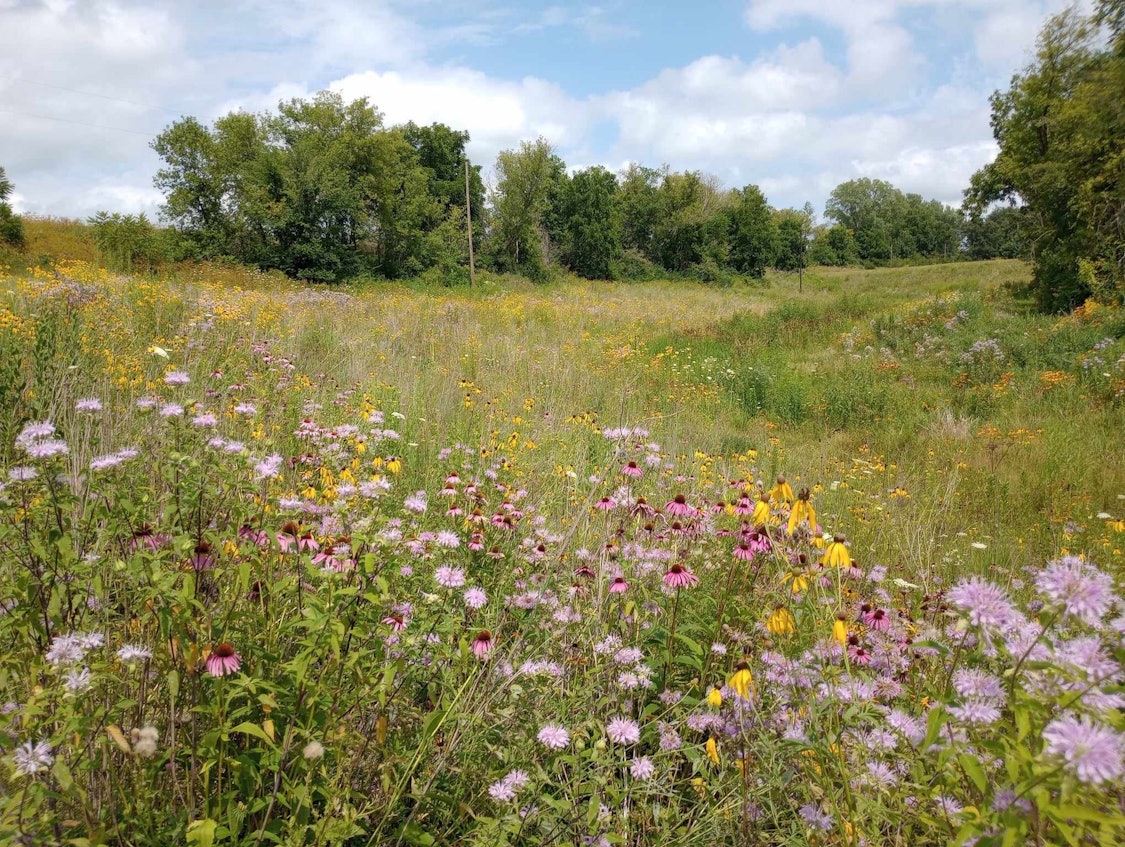
Reconstruction at Osborne, full of purple coneflower
I took in one more remnant in Cerro Gordo county at Wilkinson Pioneer Park just for comparison. I really stopped to take a run on the shell rock river greenbelt, but just the same I enjoyed the stunning beauty of this prairie preserved by the railroad right-of-way. Again, I’m struck by the absences: no thistles, no Queen Anne’s lace, more flowers than grasses. Again, I’m thinking about how this fits into our approach to prairie reconstruction.
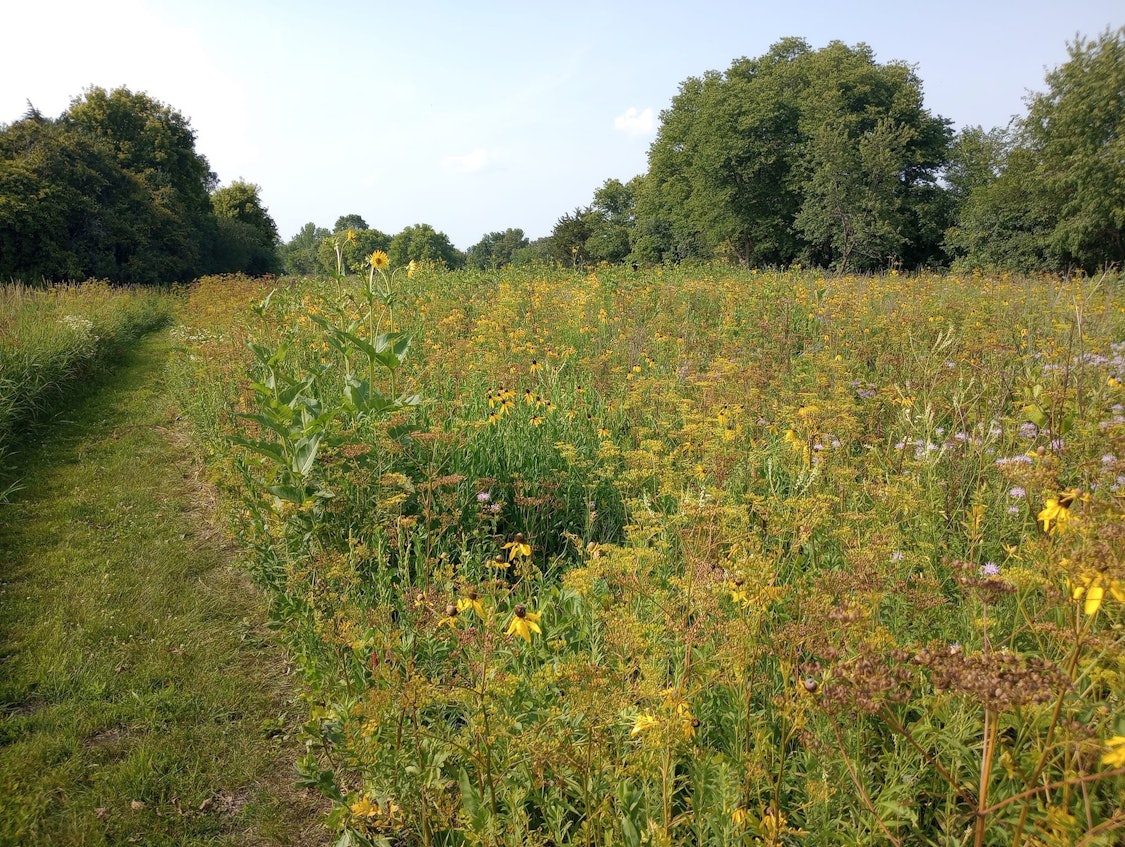
I camped overnight in Mitchell County with one more stop on my list: Hayden Prairie. For years I have meant to make a trip to this incredible place, but at about two hours from home, it proved just far enough away for me to keep putting it off. With a good night’s sleep I’d have a full day to tackle it.
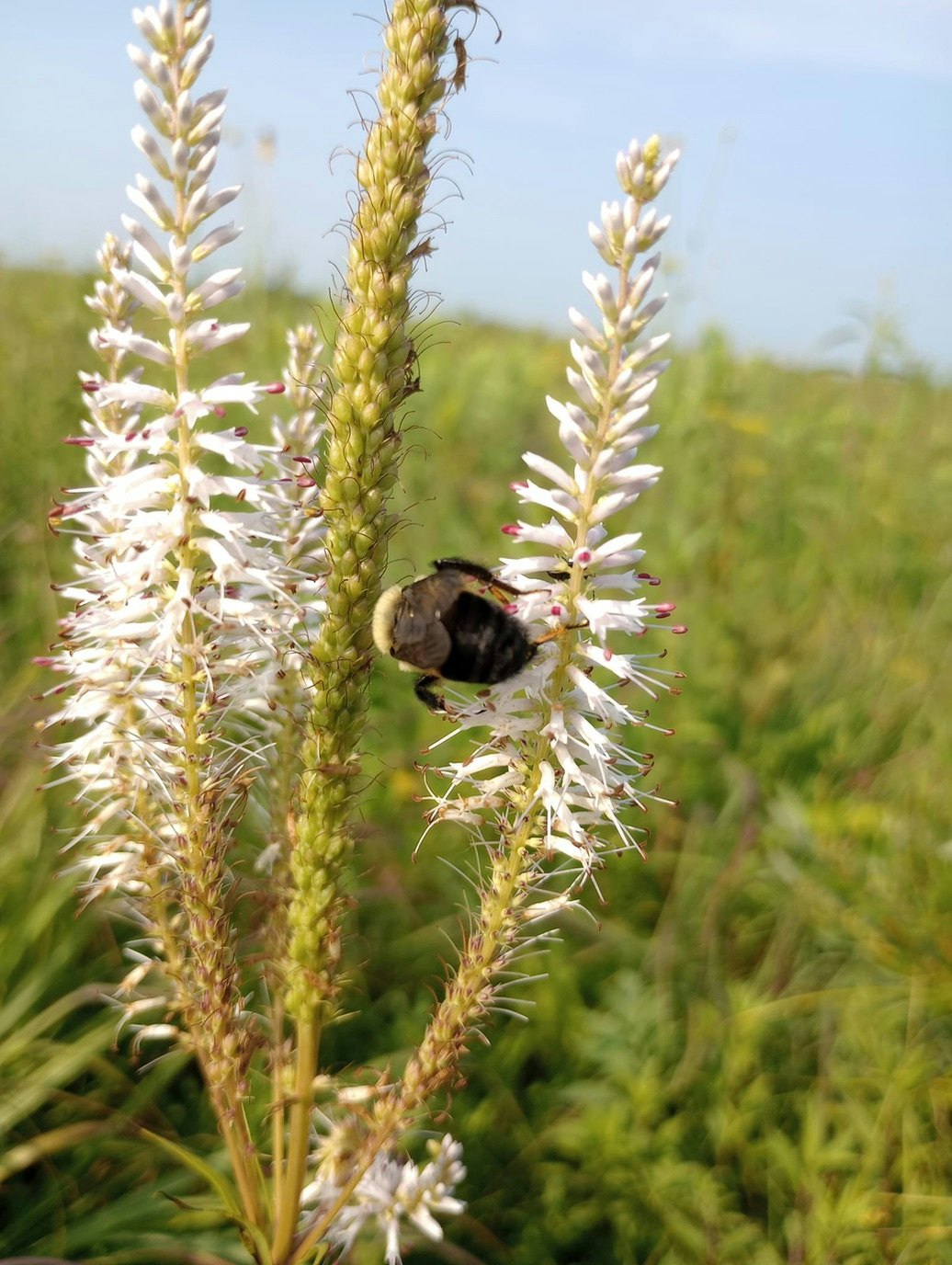
Bumblebee on a Culver’s root plant in bloom
This state preserve bears the name of one of Iowa’s greatest prairie champions, Ada Hayden. In the 1940s the state of Iowa gave Ada $100 for gasoline so she could drive around the state and document the rapidly-disappearing tallgrass prairie. This 240-acre remnant in Howard County caught her attention and has captured the minds of countless botanists, birdwatchers, and insect enthusiasts ever since.
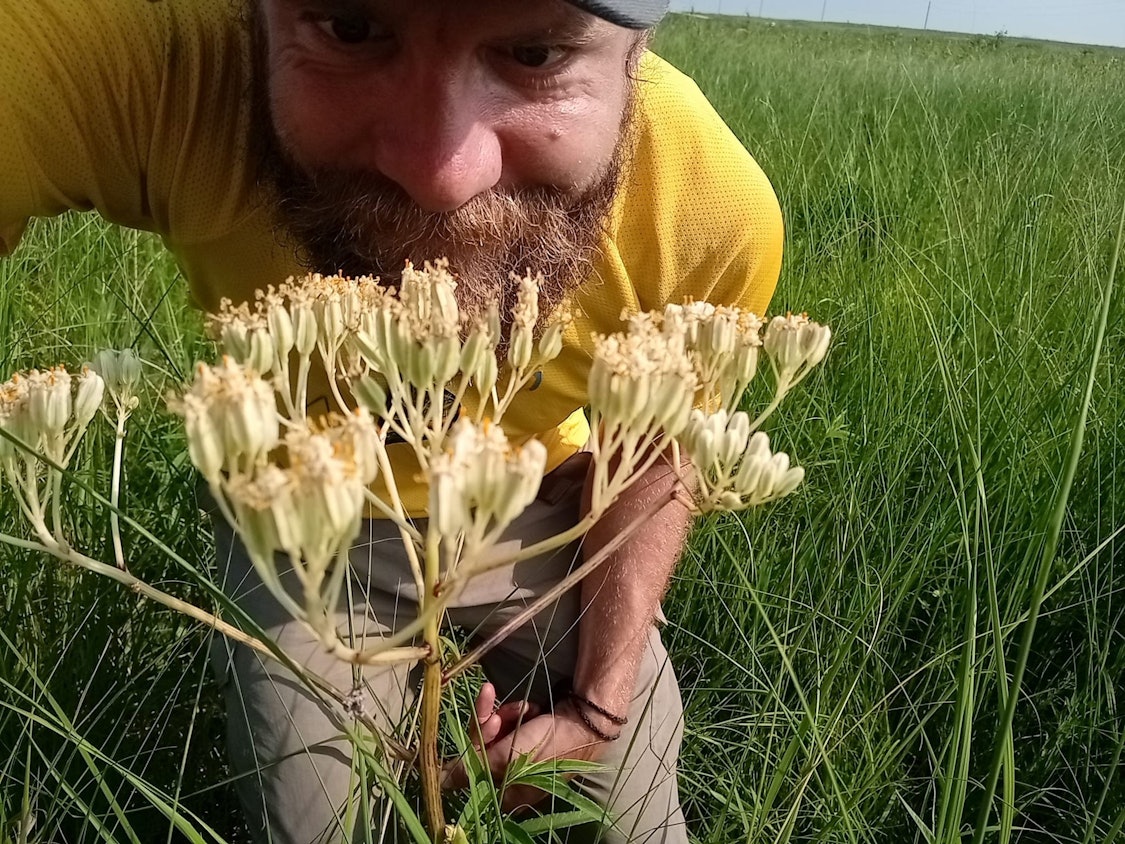
My first time meeting the tuberous Indian plantain
Like Steele Prairie, this massive swath only provided hay to the original owners who never saw a need to supplement the nutritious prairie vegetation with non-native pasture grass. Declared a state preserve in 1968, the haying ceased and prescribed burning began.
Ironically, the haying probably saved the prairie from degradation, and today the site appears to have some issues with woody encroachment. Prairies left alone, with no grazing or fire, will quickly become forests, and it appears the site managers are in the midst of battling back that forest.
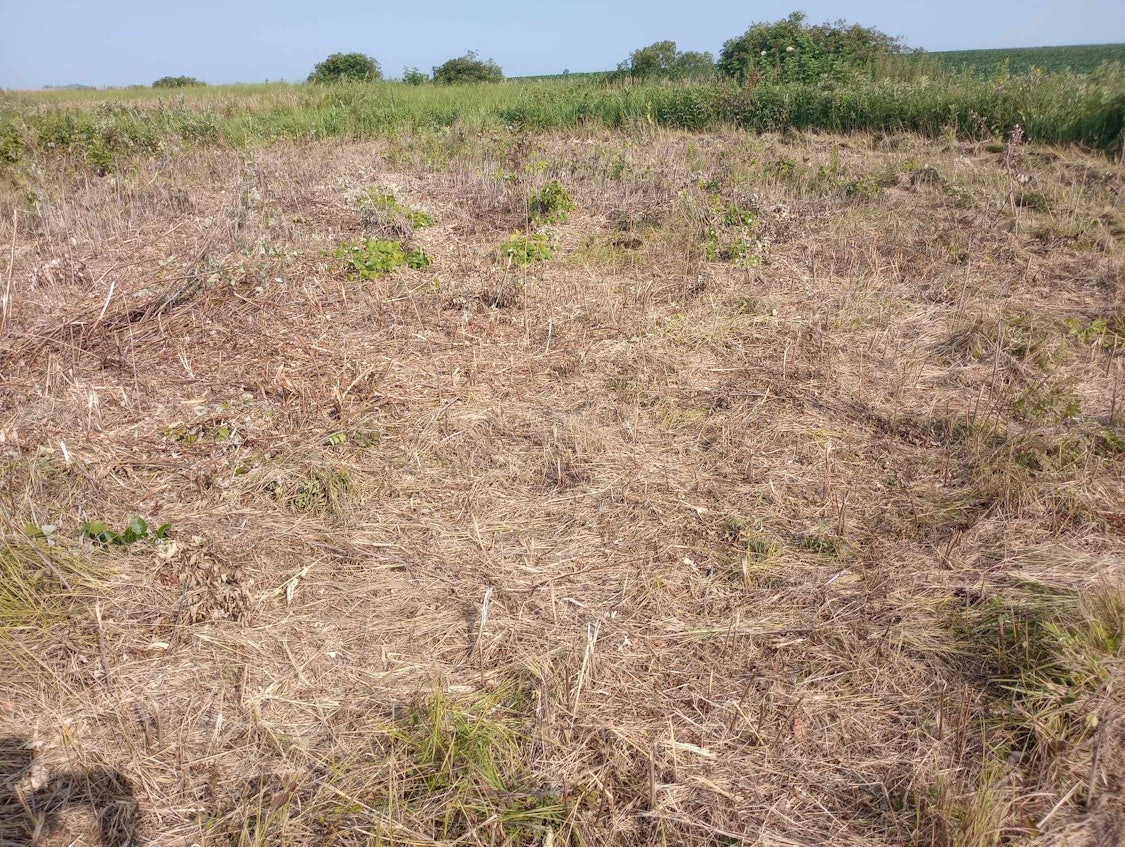
Mowed patch in Ada Hayden Prairie
A few patches of aspen and dogwood appeared to have seen the blade of a brush mower recently. I’m heartened to see such an amazing jewel get the attention it needs, and it’s a testament to the challenging dynamics of prairie management.
We have a poster in the basement, with a meadowlark singing and a caption that says “let meadowlarks nest: delay roadside mowing until August 1st.” Indeed, most prairie literature speaks of the importance of avoiding disturbance during the nesting season.
But the little mowed swaths at Hayden demonstrate that every rule has an exception, and prairie stewardship requires careful observation and a constant weighing of pros and cons. There are no hard-and-fast guidelines, no cookie-cutter approaches that apply to each and every prairie.
As I snap a few more photos before putting a bow on KAGPAI 2023, I think back once more to Dr. Rosburg’s talk. I think about the differences between Hayden Prairie and Steele Prairie, two sizeable remnants on roughly opposite sides of the state.
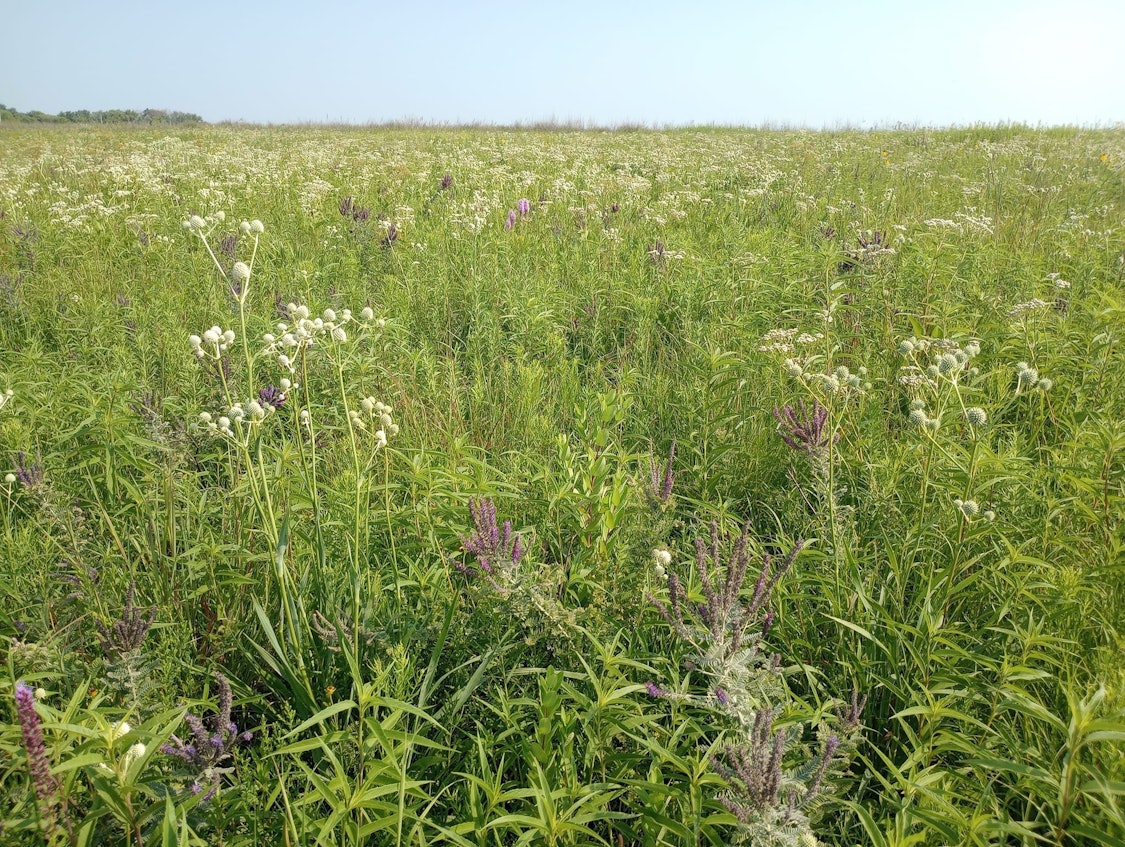
Hayden Prairie

Steele Prairie
Both prairies are surrounded by crop ground. Yet only Hayden Prairie seemed to have woody encroachment problems. Both prairies had leadplant—more than I’ve ever seen in a reconstruction—but Steele had considerably more. Conversely, I didn’t see a single lily in Steele Prairie, while Hayden had plenty.
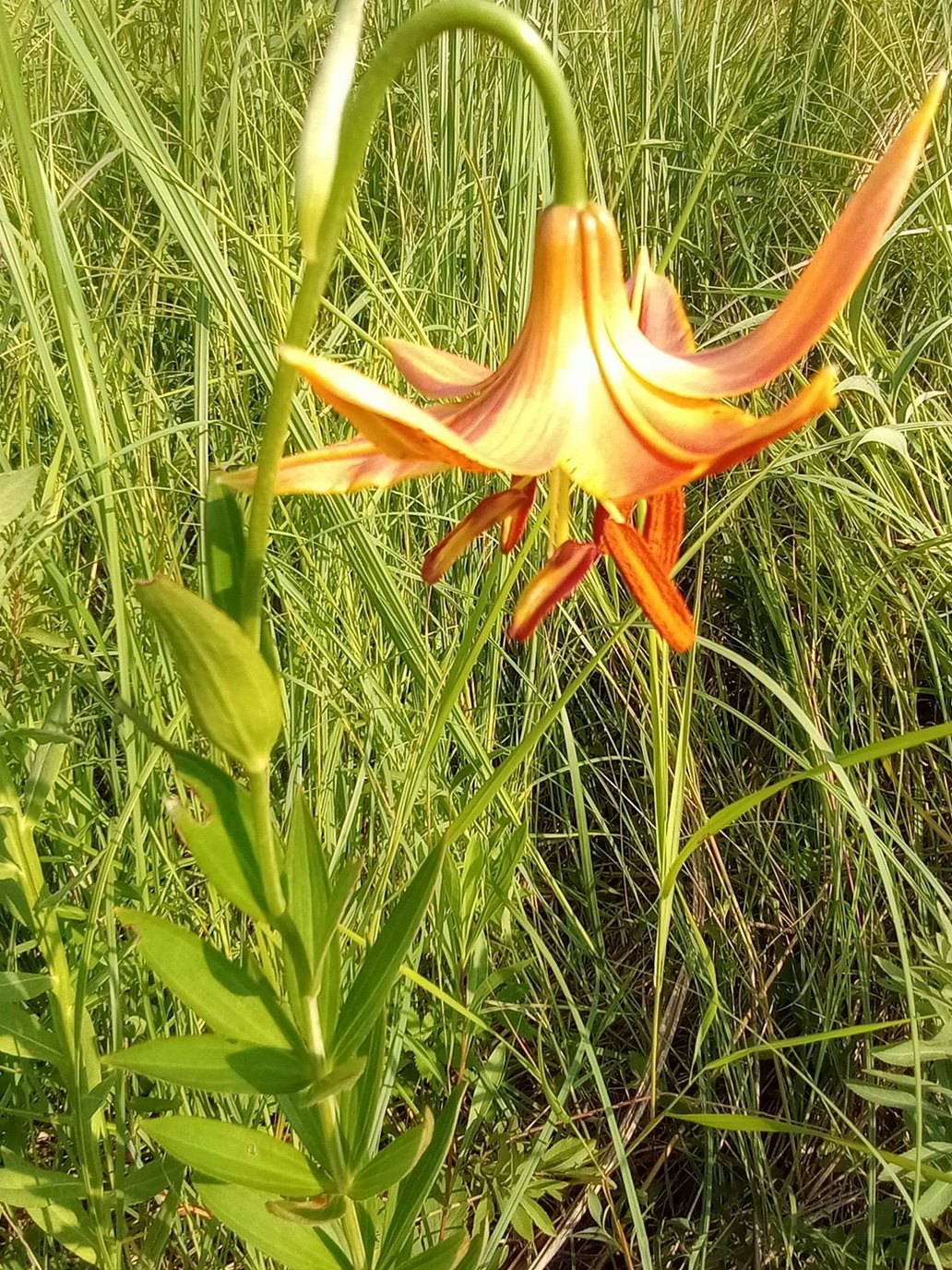
I took a moment to reflect on what this year’s journey had taught me. Last year I had rushed, this year I’d ambled. Last year I had collected (photographically) as many different flowers as I could find. This year I spent more time pondering the communities as a whole.

Bumblebee on rattlesnake master flowerhead
More than anything else, I felt a pang of sadness. Compared to the tiny remnants we (Clayton County Conservation) manage, these prairies felt impossibly huge. Yet even these largest tracts of primordial tallgrass represent the tiniest fraction of what gave the state its character.
While we’ve come a long way in rebuilding Iowa’s prairies through the conservation reserve program, revolutions in roadside vegetation management, and an emphasis on native gardening, one need not walk very far into Hayden Prairie to get the sense that these reconstructions just aren’t the same. We can grow the plants, but we can’t rebuild the community. Only time can do that.
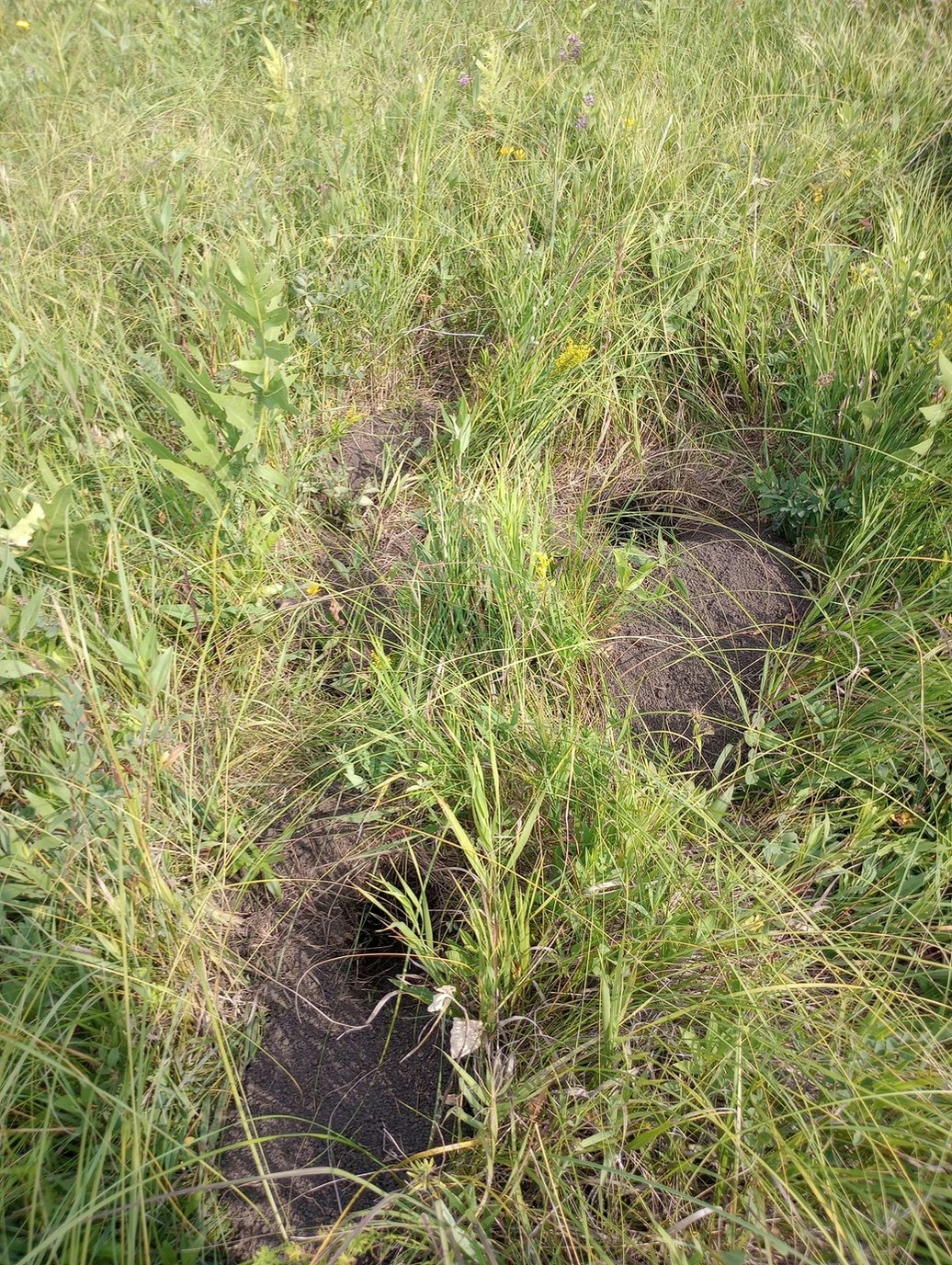
Some type of critter den in Prescott Prairie
But there’s hope. These remnants provide the reference point to inform our reconstructions, and in the grand scheme of things we’ve only just begun to try to replace some of what we’ve lost. These prairies, few and far between though they are, can still teach us and we can still learn.
With each new generation of prairie stewards, the seed mixes get a little more diverse. In the 1980s a native plant enthusiast hoping to grow a blazing star would have to order the seed from Denmark. Today the University of Northern Iowa’s tallgrass prairie center has created one of the most robust native seed programs in the country.
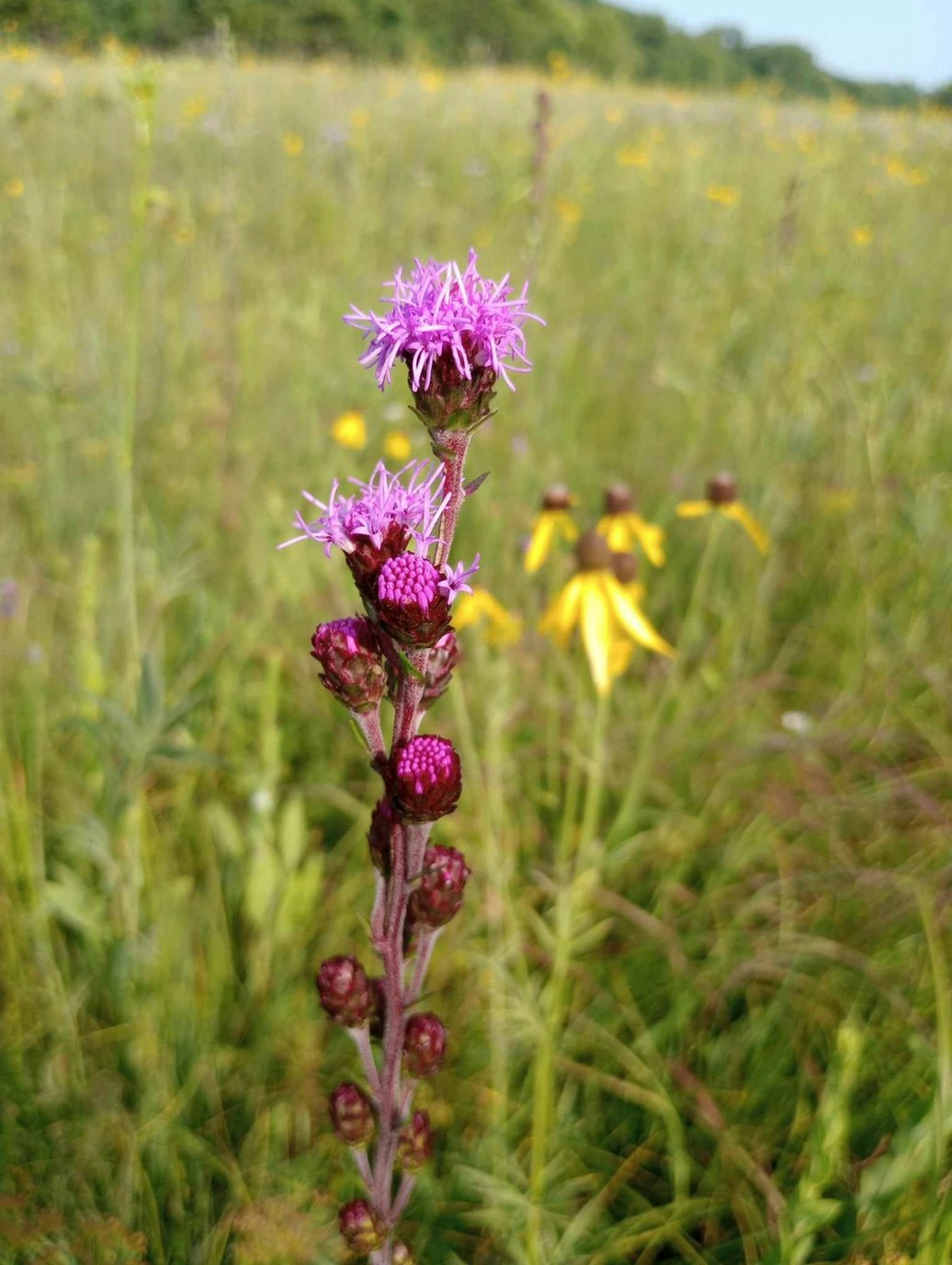
Dotted blazing star in Wilkinson Prairie
We’ve lost an awful lot of Iowa’s incredible natural history, but we haven’t lost all of it. I’m grateful for the visionaries like Ada Hayden who could save a few special places so that I, almost 70 years later, could go on an adventure across my home state—though it costs a little more than $100 in gas money these days.

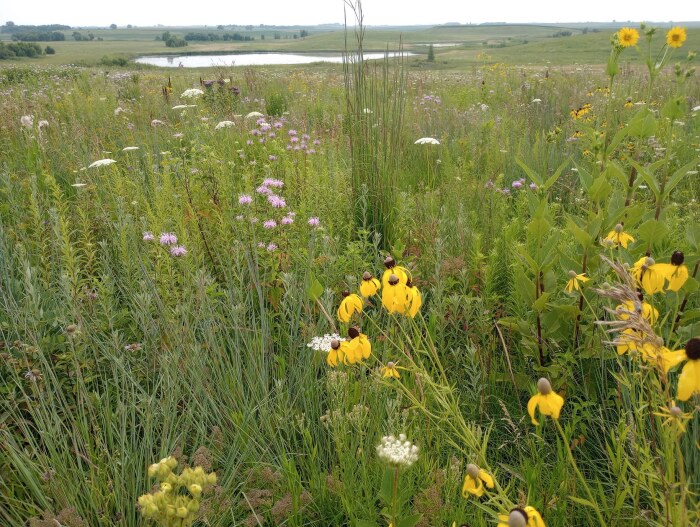
1 Comment
Thank you, Kenny Slocum, for a really interesting essay...
…that makes excellent points, especially about the contrasts between the ways we could be doing prairie plantings in Iowa and the ways a lot of them are being done.
To the best of my knowledge, the public agency that has by far the most funding for Iowa prairie plantings is the USDA. But Conservation Reserve Program prairie plantings are temporary because of the nature of the program, and are apparently not intended to be high-quality prairie reconstructions.
I’ve talked with some Iowa landowners who wanted to do really good CRP plantings, but faced challenges in the CRP rules, especially if they wanted to use prairie seed with local-Iowa genetics. I remember being able to buy prairie seed from Minnesota and Wisconsin in the Eighties. But as this essay points out, prairies differ a lot even within Iowa, and wanting to use genetically-Iowa prairie seed to reconstruct Iowa prairies is ecologically reasonable.
Those who know Iowa’s landscape know there is some rowcropped land that should never have been rowcropped and should never be rowcropped again. Taxpayers could get more good-prairie bang for their buck if more USDA funding were used to permanently replace rowcrops with prairie on that land. And if the rules made it easier to plant and manage high-quality prairie, the results could be here for our great-grandchildren as well as ourselves.
As for Steele Prairie, it has been years since I walked there, but I remember the magic. Beautiful magic.
PrairieFan Fri 4 Aug 5:22 PM